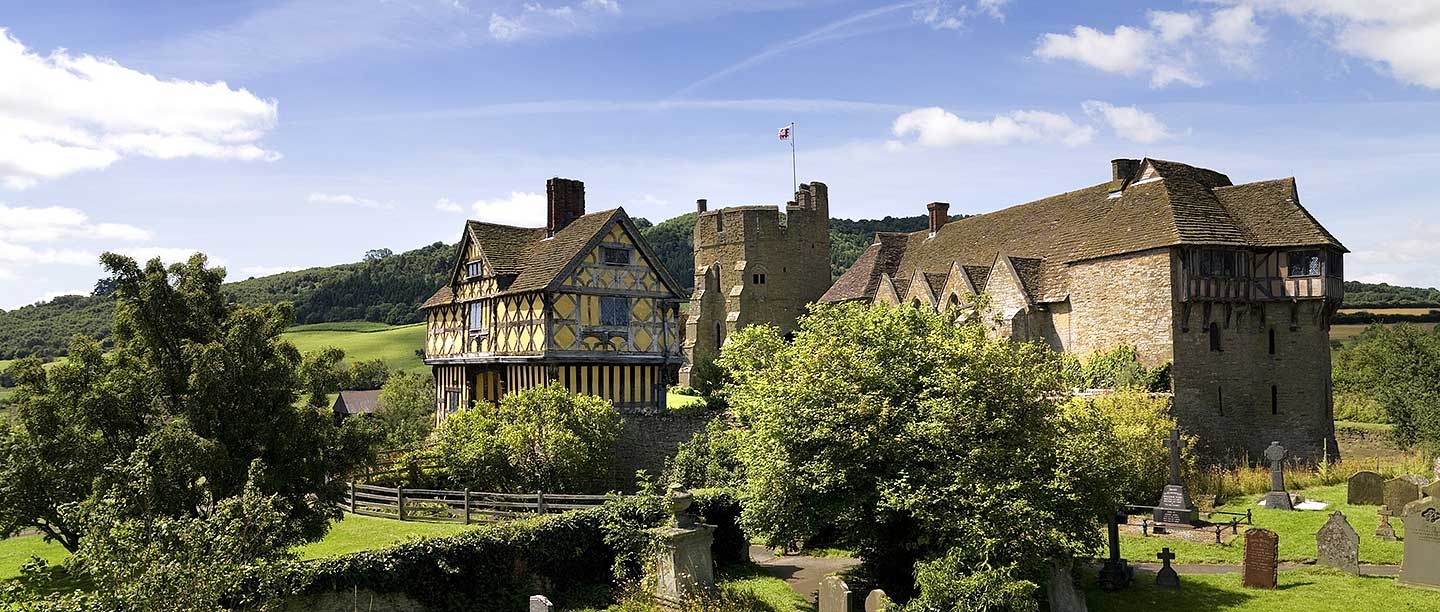Laurence of Ludlow and the Building of Stokesay
There was a settlement at Stokesay at the time of Domesday Book (1086), and probably a manorial building on the site of the castle by the early 1260s. Almost everything visible there today, however, was constructed in the 1280s and early 1290s. The wool merchant Laurence of Ludlow, who had become one of the richest men in England, bought the manor in 1281, and set about building an outstanding home there shortly afterwards. The work was probably largely completed by 1291, when Laurence obtained a licence to crenellate – or fortify – his house.[1]
In building his house, Laurence was taking advantage of the newly established peace on the Welsh border, following Edward I’s conquest of Wales in 1284. But the late 13th century was nonetheless a period of increasing activity by bands of thieves. Stokesay struck a balance between the demands of security and its owner’s wish to demonstrate his taste, wealth and importance.
At the same time Stokesay, then as now, had an unobtrusive quality probably intended to reassure the Welsh Marcher lords – many of whom were eager to borrow Laurence’s money – that this new arrival represented no challenge to themselves.
The Later Middle Ages
Laurence of Ludlow drowned in 1294 while shipping wool to the Low Countries. But his descendants put down roots and remained lords of Stokesay until 1498, living as country squires and enjoying a respected position among the gentry of Shropshire. Laurence’s son William may have had to attend to the final details of his father’s work on the castle,[2] while his grandson Sir Laurence Ludlow suffered arrest by the king for apparently failing in his duties as a tax collector.
Estate surveys show that the manor of Stokesay included 120 acres of arable land and six of meadow (for hay), along with a wood, two watermills and a dovecote.[3] Accounts which survive from the late 14th century onwards shed light on how the Ludlows managed their property and lived in the castle. They record labourers’ wages, payments for livestock and farming gear, clothes, food and drink, and music,[4] and essential repairs made at minimal cost when occasion demanded.[5]
Stokesay in the 16th century
When the last male Ludlow died in 1498, Stokesay passed through one of his granddaughters to Thomas Vernon, of a wealthy and important Derbyshire family. The Vernons’ higher social profile may have affected the standing of their house, which in 1539 John Leland described as ‘buildid like a castel’.[6]
Thomas’s grandson Henry Vernon certainly suffered from delusions of grandeur. He spent most of his time and money litigating fruitlessly to establish his claim to the lands and title of the Barons Grey of Powys. His account books show that he visited Stokesay from time to time,[7] and a dendrochronological (tree-ring dating) survey provides evidence for repairs to the north tower in about 1577.
In 1591 he was effectively ruined when he was arrested for debt, and in 1596 he sold his Shropshire properties, including Stokesay, to Sir George Mainwaring of Ightfield. The record of the sale also shows that the castle now had a park attached, containing red and fallow deer.[8]
William Craven and the Civil War
Mainwaring soon sold Stokesay on at a profit to a consortium of buyers who in turn sold it in 1620 to Dame Elizabeth Craven and her son William, later first Earl of Craven.
An enthusiastic soldier, William was also a considerable builder, and made a lasting contribution to the appearance of the castle. In 1640–41 he spent just over £530 on works there, mainly, it seems certain, on building the gatehouse. The evidence of his accounts is matched exactly by the findings of a dendrochronological survey.[9]
Civil war broke out the following year, but by good fortune Stokesay escaped destruction. Craven was a committed Royalist and Stokesay was garrisoned on the king’s behalf, the only time in its history that it was put to military use. But when Parliamentarian armies moved into Shropshire in 1645, the castle was surrendered apparently without a shot being fired. The victors demolished the curtain walls almost to the level of the moat, but left the new gatehouse standing.
The garrison’s occupation left the castle in a run-down state, but during the Commonwealth period it was restored by its tenants, members of the Baldwyn family. Its condition at this time is unusually well recorded, providing evidence for the surrounding fields, meadows and woods, for farming equipment, and for the buildings and their contents.[10]
Below: A reconstruction drawing showing the comfortable solar, or private apartment, at Stokesay in the mid-17th century
© Historic England (illustration by Peter Urmston)
Between restorations
William Craven recovered all his estates after Charles II’s restoration in 1660. He and his heirs only occasionally concerned themselves with the castle fabric. Early in the 18th century the Baldwyn family left, and Stokesay was let to a series of tenant farmers, who occupied at least parts of the castle for much of the 18th century. Some buildings were used as stores and workshops; the hall became a granary, while the basement of the south tower was converted into a smithy – a fire there in 1830 burnt out all the floors above.
While the buildings were falling into seemingly irreversible decay, Stokesay was beginning to arouse antiquarian and aesthetic interest. Increasing numbers of watercolours and engravings were made, some showing the castle in a romantic light, others illustrating the uses to which its buildings were now being put.
Visitors who wrote appreciatively of the castle’s historical value also lamented its dilapidated condition. The castle found a committed champion in Frances Stackhouse Acton, a talented artist and antiquary, who in 1853 appealed to Lord Craven to save it from utter collapse. Just over £100 was spent two years later on ‘Clearing out and securing Stoke Castle’,[11] but it was insufficient to counter the effects of centuries of near-dereliction.
Rescue and preservation
In 1869 John Derby Allcroft, a successful London glove manufacturer, bought the estate, and soon began an extensive and sympathetic programme of repairs. He built himself a new mansion nearby, at Stokesay Court, and ‘decided that the Castle should be left empty but kept safe and sound as an historic monument’.[12]
The resulting ‘substantial and greatly needed repairs’ began in 1875. By 1887 the castle buildings were structurally sound, while probably looking much as they had done in the late 17th century. Almost uniquely for its time, the work left little trace of its own achievement except the buildings it conserved. As such, it is a monument to the art of unobtrusive restoration.
Probably the most intrusive part of Allcroft’s restoration involved making the gatehouse fit for occupation by a caretaker, and even that affected only the internal fittings.
Allcroft’s descendants did all they could to preserve the essential elements of Stokesay’s fabric. They opened the castle to the public, spending on its upkeep much of what they received from admission fees. But the cost of maintainance increasingly outstripped their resources, and in 1986 Jewell Magnus-Allcroft entered into an agreement whereby English Heritage was to become responsible for Stokesay’s conservation during her lifetime, and assume ownership upon her death, which occurred in 1992.
By then a second restoration of the castle had taken place – one which had been as careful as its Victorian predecessor to respect, and preserve, what were increasingly valued as structures of time-honoured beauty and authenticity.
About the Author
Henry Summerson is the author of the English Heritage Red Guide to Stokesay Castle.
Find out more
-
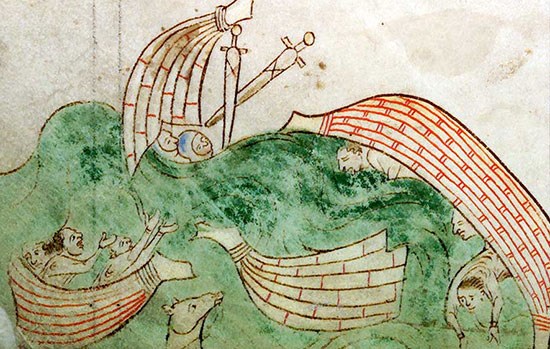
Laurence of Ludlow and Medieval Wool Wealth
Find out how the extraordinary growth of the wool trade not only paid for the building of Stokesay Castle but also bought its owner power and status.
-
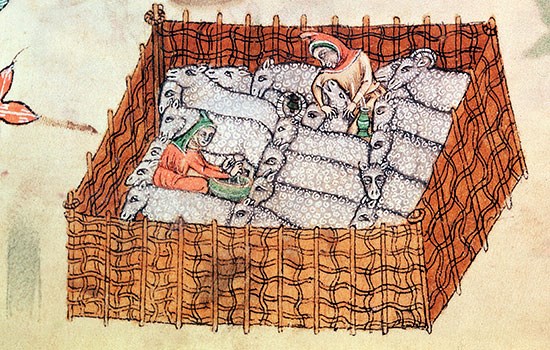
Faithful subject or rebel? A 14th-century knight and a protest poem
In 1342 Sir Laurence Ludlow of Stokesay Castle was arrested for failing to collect taxes. Was he connected with a protest poem composed at the time?
-
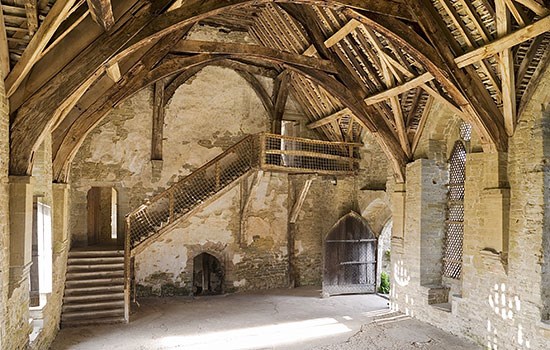
Description of Stokesay Castle
Read a description of the castle – one of the first fortified manor houses in England, which bears witness to the taste, wealth and importance of its owner.
-
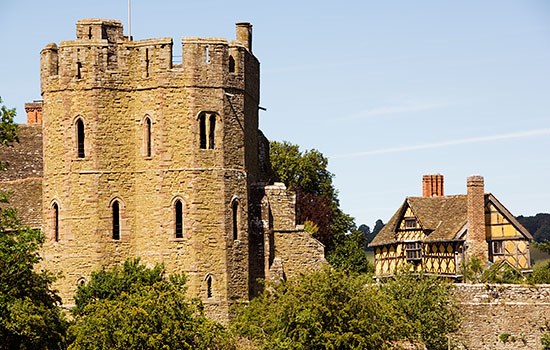
Significance of Stokesay Castle
Discover the importance of Stokesay Castle, which lies not just in the buildings themselves but in their survival with so little alteration.
-
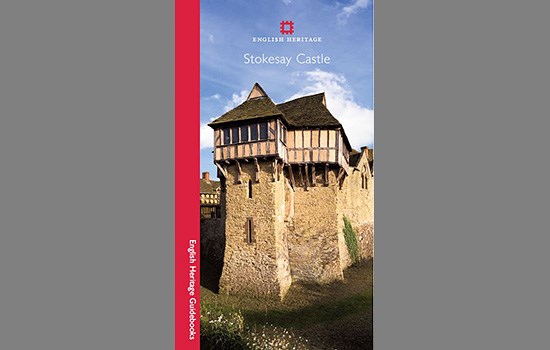
Buy the guidebook to Stokesay Castle
Packed with plans, reconstruction drawings and historic photos, this guidebook gives a vivid account of the castle’s history and its occupants.
-
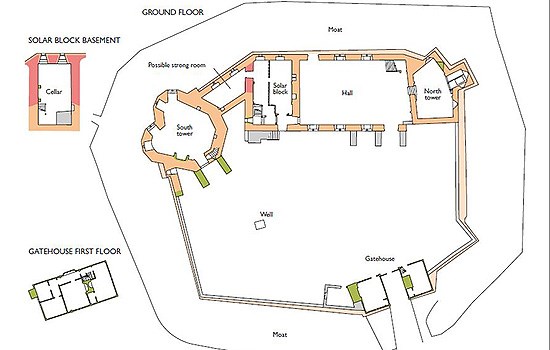
Download a plan of the castle
Download a plan of Stokesay Castle as a PDF to see how it has developed over time.
-
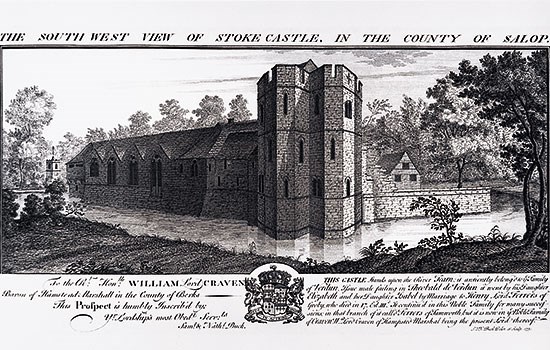
Research on Stokesay Castle
Find out how research has informed our understanding of the castle, and what remains to be discovered.
-
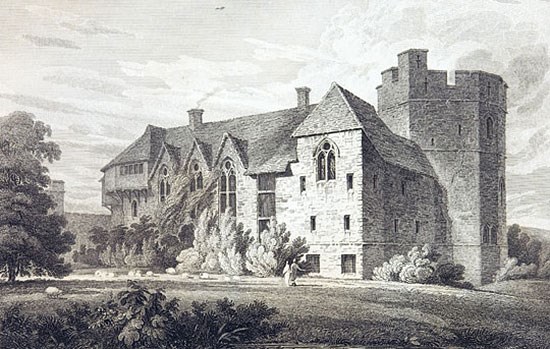
Sources for Stokesay Castle
Use this list of written and visual sources, published and unpublished, to learn more about Stokesay Castle and its history.
Footnotes

